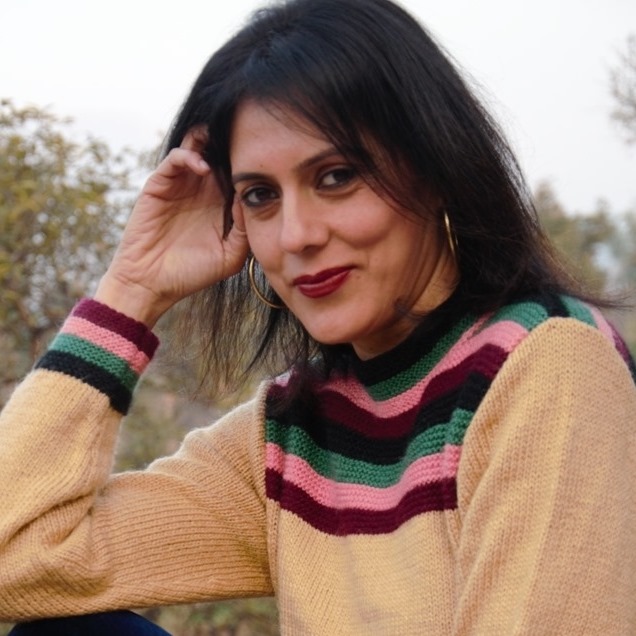Priya is interviewed by Sufi and Aminah for Histories with Osho. Priya is a member of Osho Nisarga’s management team and is a retreat facilitator. (Her next Silent Retreat: 1-22 February 2026)
Priya speaks on her upbringing:
My childhood with Osho was very special. Very special, because he guided guided my mother and father at every stage of my upbringing.
When I needed my father the most, he was available. When I needed my mom, she was there for me. And when the time came that I wanted to be independent of them, I was at the Ranch in America. I was 12 when I went there. I needed my own independence, my space, and everything happened at the right stage, at the right time, with the right people.
I’m amazed – I was born in the right family, I met Osho at the right time, I went to his communes at the right time, I left my family at the right age to be in America. I did all the schooling as well. He made sure that I passed all my education with good grades.
His basic concern with me was: “I want you to live my vision of the new man.” He always told me that – rich in every dimension, not just spiritual. Materialistically, you know, you do your studies! He was so insistent on me studying. He made sure I had the degrees. I went to a proper college. I did my university degree while living in the ashram. I had to study and pass all my education with good grades.
Osho was very loving, but also very strict with me. I couldn’t do my tantrums with him. I tried many times to escape school. I cross-questioned him many times. I asked, “You always criticize the education system, the scholars, the PhDs – then why do you want me to study in the same education system you criticize?”
And Osho’s answer was, “This is my criticism, not yours. You have to find your own. My sannyas is not an escape from the world. I want you to be as confident in the world as you are in my commune.”
He wanted me to be multi-dimensional. He chose my subjects. I wanted to study arts, but he made sure I also studied politics, philosophy, logic. He wanted me to study dance, painting, work in finance – every dimension was covered.

About growing up in the commune:
To be in the commune is such a great exposure. You meet so many people from all over the world. Otherwise, you have a very narrow, conservative Indian family. In a commune, you have a broader vision. You meet people from different cultures. You have so many aunties, so many uncles, so many dads and moms. It’s a very rich life.
I’ve lived a very rich life, with so many friends I could never have had anywhere else – even if you have the best parents or best schooling. In the commune, you’re so loved, so taken care of. It’s a womb, where you have a Master and all these beautiful people living together. You feel expanded.
When I went to America, to the Ranch – it was a big change. So many people. I learned so much there that I could never have learned in any school. Everyone came for one thing: Osho.
You feel safe. The schooling with Osho was beautiful. It was not a regular school. Nobody was made to feel inferior or superior. Every child is unique. The school was beautiful.

About Pune Two and her studies:
When I was welcomed back to Pune Two, I studied and worked in the ashram. And did very well. It was the best time of my life, again, after two years of being separated from Osho. I loved being the commune. That time the commune was at its peak, so many people… It was a beautiful time.
I was in college, and my college was fantastic. Osho chose my subjects. He said, “You’re not going to do art. I want you to study different subjects.” He chose my subjects: political science, logic, philosophy, psychology. He said, “These are my subjects. These have been my subjects, and I know you’ll do very well in these.”
To my surprise, I did really well. I was so good in philosophy, because all my life I had heard Osho. So you know, it came very natural to me. I could write pages of it. If the question was on communism – Karl Marx said this and this – but where he fails and where Osho comes in, I would write that. So every examination of mine I wrote something about Osho: where this philosopher fails and where Osho comes in, and what his approach is.
All my professors, would ask me, “Who are you? You’re not a regular person. Who are you?” I said, “I’m from the Osho commune, that’s why I write all these things. A regular person would not write all this.” And then I brought my professors to the ashram. A lot of my friends took sannyas, a lot of my friends became Osho lovers. I became a bridge for bringing people to the ashram.
Pune Two was my best time. I did my bachelor’s degree in psychology, I did my master’s degree in psychology, all the while I was living in the ashram with a wild life. I had no place to study, the ashram had no place. I would find corners where I would study, and if I didn’t find any corners, I would go to Lao Tzu house, to Osho’s house, and find little corners where I could sit and study for my exams. Surprisingly, I did so well, because it was so easy for me. It had become so easy because of the life I had lived with Osho; everything became so easy.

Meeting Osho in darshan:
I would have so many questions going on in my head: “This time I’ll ask this question, and this time I have that question.” But as soon as I would enter his room, I would have no questions, as if I had absolutely no mind. All these questions were outside the room, and as soon as I walked in, every question felt so stupid. Actually, I forgot all the questions. His presence was so strong that nothing really mattered.
I would sit there. I had no questions at all, I would just absorb his presence. Then when the meeting was over and I left to go back to my activities outside, again those questions would come back. But when I was there, there was nothing, just silence. It was not important to ask. Every question felt so silly. There were no questions in his presence. This was very strong for me, every time I would meet him personally.

After Osho left his body:
Nothing really changed for me. But I felt much more responsible. I felt, now it’s my responsibility — for meditation, for working for Osho. And also, for me, he is more of a presence than a person. So his presence continues. I never feel like he’s not there.
I feel the same with my mom. I feel my mom is gone, but her presence is so much here at Osho Nisarga — she’s guiding me all through. I don’t feel a loss. Neither do I feel that with Osho. He was there as a person, but he’s more of a presence and much stronger after he left his body.
I even feel the same with my mom. She had cancer for five years, so her body was very sick. Since she has left, I feel she is everywhere. She is much more available and helping me to run the commune.
I feel Osho’s still guiding me.

About Osho Nisarga:
Osho Nisarga is a very small meditation center in the Himalayas, in India. We are situated in Dharamshala, which is the Dalai Lama area. It’s a spiritual land of the gods; many mystics have lived here.
We can accommodate 50 people at one time, in beautiful rooms. We have a little stream with water from the Himalayas running through the property all year-round. Most of the rooms are built in such a way that they’re facing the river. In monsoon it becomes really loud and heavy — it’s beautiful and wild.
We run meditation programs all year round. We have group leaders come from all over the world. We have the Tantra groups happening — Sarita’s Tantra group, Avikal is leading his trainings and Satori groups.
We also have Indian group leaders running their regular meditation camps here. We have at least 32 programs in one year; at least three programs a month. I also lead the Silent Retreat for 21 days every February* — 21 days of total silence — this is the best place for silent retreats.
We have Mystic Rose, No-Mind, and we offer all Osho meditation therapies and groups. We have beginners’ courses and advanced courses. The minimum is a four-day course for beginners; the maximum is 21 days, like Mystic Rose and the Silent Retreats. In between we have dancing courses, we have Sufi, we have many things going on…
* The next silent retreat is scheduled for 1-22 February 2026. More on oshonisarga.com
These excerpts have been edited for clarity and length
Timeline
00:14 – Do you remember the first time you saw Osho? How was it?
06:36 – How was your childhood in Osho’s world?
13:43 – You were in Pune One, the Ranch, Pune Two?
14:08 – How was it to be a child in the commune? Were there other kids to play with?
18:31 – Tell us a bit—how was it to be in Osho’s presence? To talk to him?
28:50 – What difference did you see between Pune One, the Ranch, and Pune Two time? You went through the whole experience, what could you say about that?
33:30 – Could you talk about your mother?
40:05 – What changed for you after Osho left his body?
43:59 – Could you tell us a little about Osho Nisarga – how is it, where is it, and how does it work?
51:20 – How do you see Osho’s work today for newcomers? Would you have a message?
54:39 – Do you have an idea when Neelam’s book is going to come out? [It has come out in the meantime, ed.]**
57:05 – Thank you, thank you very much.
Related links
- Dharm Jyoti interviews Ma Neelam on YouTube
- ** Neelam’s book, Seeing, Watching, Living with the Master and Being at Home: Review on Osho News – and more on Osho Nisarga
Related articles on Osho News
- Histórias com Osho – Histories with Osho – Two Brazilian sannyasins create an oral history of life with Osho – by Subhuti
- The depth of his love – Priya’s story: how Osho saw the potential in her to take care of a centre like Osho Nisarga (March 2025)
- Turning in – in the Himalayas – “I have a deep respect for this process that allows me to peel away my darkness, my delusions, and my misunderstandings and to welcome my inner light to shine,” writes Aneesha about a Silent Retreat at Osho Nisarga (October 2024)
- Experiencing a 21-Day Silent Retreat – Priya got nudged by existence and decided to immerse herself in a 21-day silent retreat at Osho Nisarga (February 2012)
- Tag: Histórias com Osho





Comments are closed.